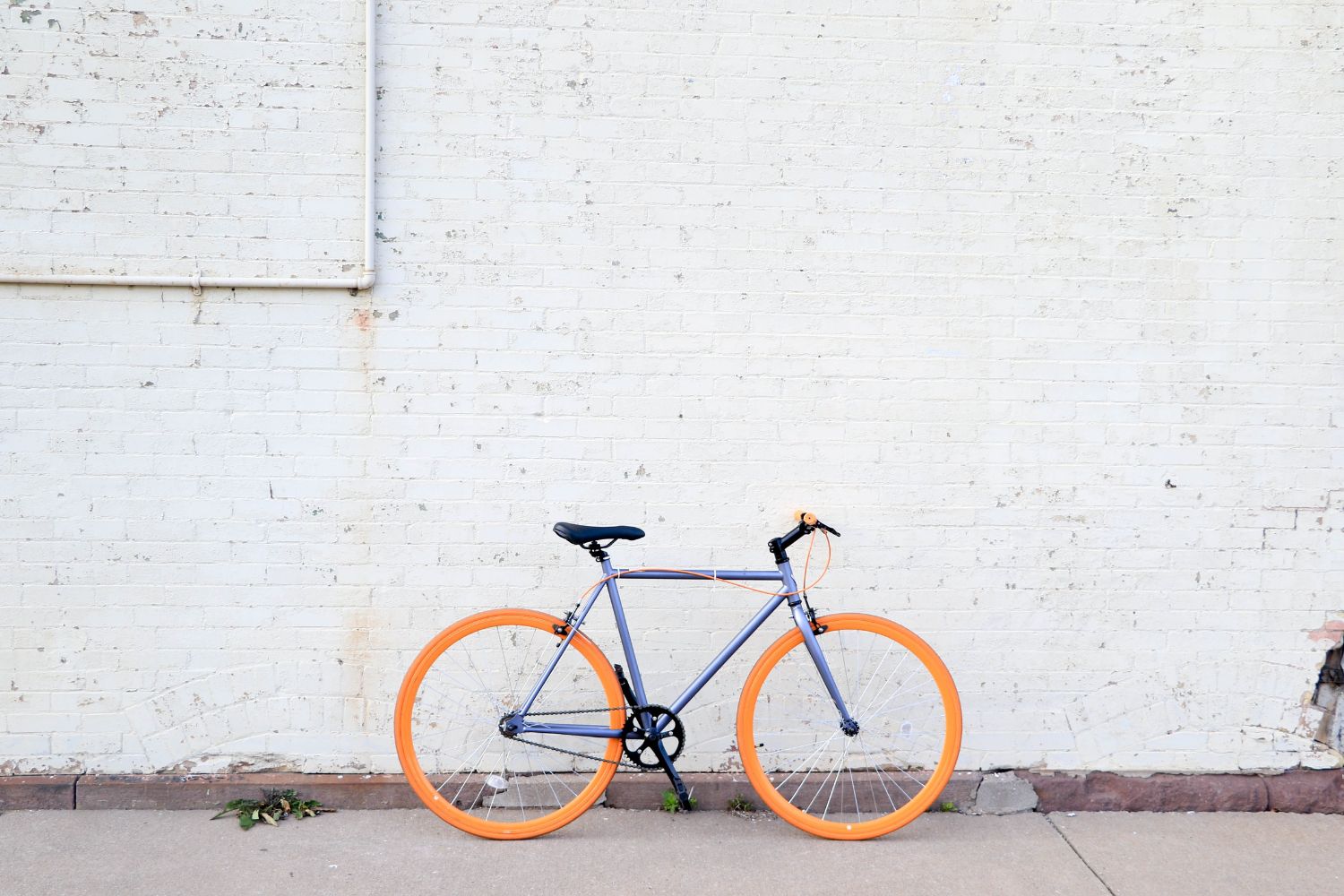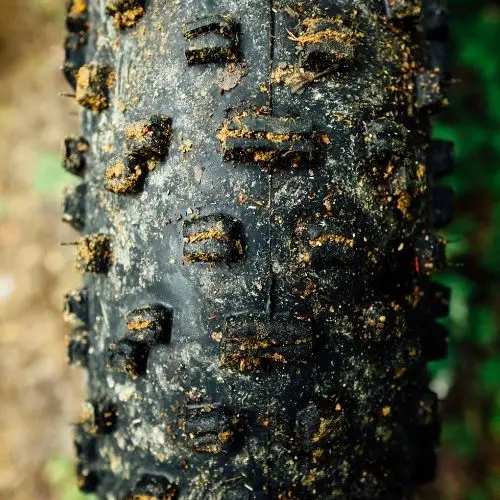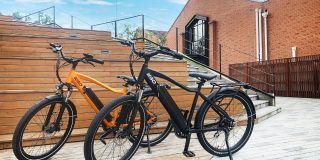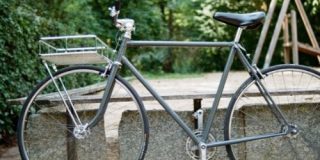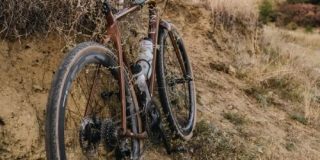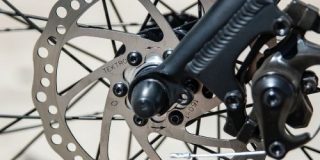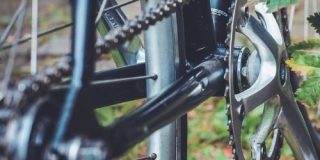A hybrid bicycle needs a tire pressure between 50 psi and 70 psi. In fact, hybrid bicycles need a psi that crosses between that of a road bike and a mountain bike. Therefore the psi for each tire may vary up to 20 points, but will always stay in range. The average hybrid bicycle will have a psi of 60.
When it comes to hybrid bicycles, the ideal pressure will always lie somewhere between 50 and 70 PSI. This is because hybrid bikes need to maintain a balance between the low-pressure tires of road bikes and the high-pressure tires of mountain bikes.
What does this pressure allow for?
Being in between a road bike and a mountain bike pressure for a hybrid bike allows for hybrids to be able to gain enough traction off-road to make it feasible to run on trails effectively. However, having higher pressure than a mountain bike means you can still gain enough speed on the road to be an effective commuter.
That is why hybrid bicycles are some of the best solutions as an all-around great bike. You get the comfort of a cruiser bike, some of the capability of a mountain bike, and somewhat of the speed of a road bike.
Does Every Hybrid Tire Have the Same Pressure?
Hybrid bicycles are crosses between road and mountain bikes. With this crossover comes increased functions that allow you to ride for general purposes, commuting, and cycling. However, tires play a key role.
Anytime you use less than ideal tires, you are not going to have a pleasant ride. The traction will be off and riding will quickly become uncomfortable. Similar to vehicle tires, bicycle tires need to be tailored specifically to their purpose.
For example, in automobiles, winter tires and all-season tires are two types with differing functions. The same applies to hybrid bicycles. If you will be riding on rough surfaces such as gravel and dirt, there are tires designed for those conditions.
If you are a commuter and stay on road, you’ll need low resistance. All of these seemingly minor differences play a huge role in the type of tires you invest in. Let’s take a closer look at how to optimize your tire’s psi by selecting good markers overall.
Selecting the Best Tire
Before buying your new ties, there are a few categories to consider in the process such as road traction, comfort while riding, off-road performance, strength/durability, and the ability to withstand holes and punctures.
We’ll go over a mini-review of each to help you get a better idea of what to look for.
On-Road & Off-Road Traction
This is defined as the friction between your bicycle and the road. You need to have good on-road and off-road traction if you’ll be riding in both environments. When you lose traction, you lose grip.
Bikes should be composed of highly elastic rubber. Take note of the tread pattern on the tire. Some are only made for city streets, paved paths, and hard-packed smooth dirt.
If you need a bike with strong off-road capabilities, look out for a tread pattern with grip. This offers increased stability and confidence when riding in outdoor terrain. Wider knobs on the tread allow for proper traction on loose terrain.
- What Type of Bicycle is Good for Delivery Services?
- Using a Hybrid Bike For Touring: Can it be done?
- Hybrid Bikes: Are they worth buying for yourself?
Comfort While Riding
Being comfortable while riding is important, especially for long trips.
This is why you should look for tires with good composition and stability to ensure you feel safe and confident the entire ride.
Furthermore, tires with reflective sidewalls are a safety feature when riding at times with decreased visibility, low light, and after dark.
Durability and Ability to Withstand Punctures
A strong and durable tire comes down to materials and production. This is why you should look for a continuous center tread and extra material to protect the tire.
In addition, durable casing and high-quality rubber are the best for long-lasting performance.
There should be at least 3mm of protection against punctures and holes. A combination of rubber and latex is the best way to achieve a smooth ride that is protected from common punctures.
The Tires Pressure for Different Models
As you can see above, there is an immense selection of different types of tires. When it comes to tire pressure, some models have slightly higher/lower psi. This is due to the individual differences in composition and intended use.
To determine your tire’s ideal psi, refer to the owner’s manual. This will give you more information and help you determine the best level to keep your tires at.
How do you inflate a hybrid bike tire?
Most hybrid bicycles utilize a Schrader valve instead of a Presta valve. While the Presta valve is able to handle more pressure, and can work with a tubeless tire, this is not an issue on a hybrid bike.
The Schrader valve is a much easier product to utilize (making it great for beginners), and is more commonly used on most air pumps.
Because of this, all you have to do to inflate a hybrid bike tire is to hook it up to any generic tire pump, pump it up to the pressure stated on your tire, and you are good to go!
Looking for a good tire pump? I really like this one right here.
Conclusion
Remember: A tire pressure that is too low will result in a conforming tire. In other words, the traction will be decreased to the point where you can’t move your bike efficiently.
Thus causing more intense and laborious pedaling. Furthermore, a very important part of riding is responsiveness and this will decrease as well with too low psi. On the other hand, if your psi is too high, the vibration and bounce of the tire will be highly uncomfortable and will increase rolling resistance.
Now that you understand what an ideal psi looks like, make sure to employ these tips and suggestions when shopping for your next set of tires.

